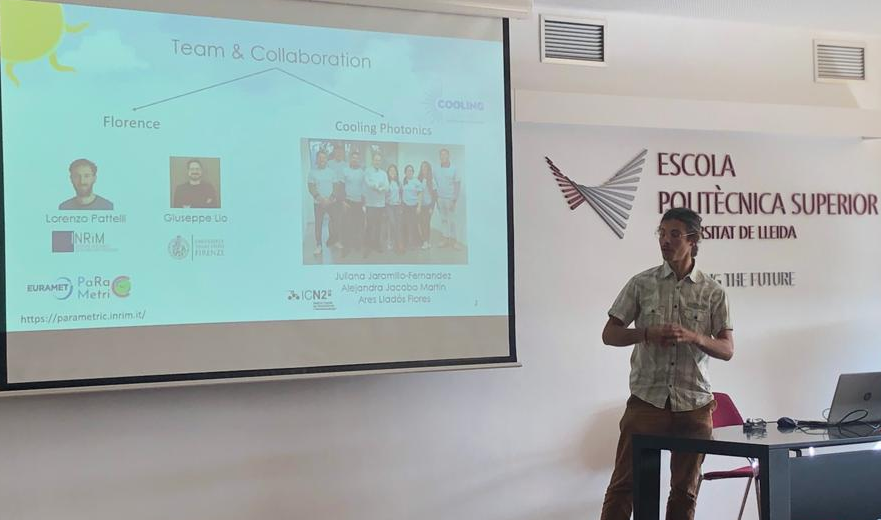Conference – Nov.2023
Passive radiative cooling materials recently emerged as an environmentally friendly technology able to provide net cooling power without any external energy source by dissipating their thermal energy into outer space (3K) at wavelengths between 8 and 13 μm, where the atmosphere is largely transparent in case of a cloudless sky. Among many applications, passive radiative cooling materials could be therefore used as a top layer for the thermal management of photovoltaic cells, to increase their efficiency and slow down their aging rate.
The presentation focused on two parts. The first one delved into the numerical design of optimized micro patterns to enhance the performance of solar cells. In the second part, he presented the development of an open-hardware real-time temperature measurement apparatus for the testing of passive radiative cooling samples, discussing common pitfalls encountered in the monitoring of ambient and sample parameters, and some lessons learned during the process.
